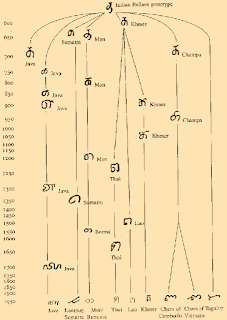Tamil culture and Paintings.
From ancient days there is a great believe over Tamil culture and Tradition. The culture was a rooted culture towards ancestors and followed through many ages. The deep in depth towards the Arts and Culture the arts played a major role over the Dravidian's.
The Definition of Culture
From ancient days there is a great believe over Tamil culture and Tradition. The culture was a rooted culture towards ancestors and followed through many ages. The deep in depth towards the Arts and Culture the arts played a major role over the Dravidian's.
The Definition of Culture
"Definitions of culture.... in the anthropological rather than the normative sense, are notoriously difficult and unsatisfactory. It is probably best to approach this problem by using this term without attempting too much in the way of formal definition, and looking at what culture does." (Professor Ernest Gellner, Cambridge University - Nations and Nationalism, Basil Blackwell, 1983)
"...culture consists in the way analogies are drawn between things; in the way certain thoughts are used to think others; in figure of speech, in which a term is transferred to something it does not literally apply to... Culture consists in the images that make imagination possible, in the media with which we mediate experience. All the artifacts we make and the relationships we enter into, have in that sense 'cultural' consequences, for they give form and shape to the way we think about other artifacts, other relationships..."
If culture is the distilled essence of the way of life of a people, then, in the case of the Tamil people, the distillation process has covered a time span of more than two thousand years. And, today, the Tamil people, living in many lands and across distant seas acquire strength from the richness of their own cultural heritage - not only because that that culture has something to do with their own roots and their way of life but also because they believe that that culture has a significant contribution to make to the world.
The following works of art and literature are among the most remarkable contributions of the Tamil creative genius to the world's cultural treasure and should be familiar to the whole world and admired and beloved by all in the same way as the poems of Homer, the dramas of Shakespeare, the pictures of Rembrandt, the cathedrals of France and the sculptures of Greece:
1. The ancient Tamil lyrical poetry compiled in ‘The Eight Anthologies’; this poetry is so unique and vigorous, full of such vivid realism and written so masterfully that it can be compared probably only with some of the pieces of ancient Greek lyrical poetry;
2. The Thirukural, one of the great books of the world, one of those singular emanations of the human heart and spirit which preach positive love and forgiveness and peace;
3. The epical poem Cilappathikaram, which by its "baroque splendour', and by the charm and magic of its lyrical parts belongs to the epic masterpieces of the world;
4. The school of Bhakti both Vaishnava and Saiva, which is one of those most sincere and passionate efforts of man to grasp the Absolute; and its supreme literary expression in the works ofManikkavasagar, Tirugnana Sambandar, Nammalwar and Andal.
5. The philosophical system of Saiva Sidhdhantha, a system, which may be ranked among the most perfect and cleverest systems of human thought;
6. The South Indian bronzes of the Chola period, those splendid and amazing sculptures belonging to the best creations of humanity,
7. The Dravidian temple architecture, of which the chief representatives are perhaps the temples ofTanjore, Chidambaram and Madurai.
2. The Thirukural, one of the great books of the world, one of those singular emanations of the human heart and spirit which preach positive love and forgiveness and peace;
3. The epical poem Cilappathikaram, which by its "baroque splendour', and by the charm and magic of its lyrical parts belongs to the epic masterpieces of the world;
4. The school of Bhakti both Vaishnava and Saiva, which is one of those most sincere and passionate efforts of man to grasp the Absolute; and its supreme literary expression in the works ofManikkavasagar, Tirugnana Sambandar, Nammalwar and Andal.
5. The philosophical system of Saiva Sidhdhantha, a system, which may be ranked among the most perfect and cleverest systems of human thought;
6. The South Indian bronzes of the Chola period, those splendid and amazing sculptures belonging to the best creations of humanity,
7. The Dravidian temple architecture, of which the chief representatives are perhaps the temples ofTanjore, Chidambaram and Madurai.







